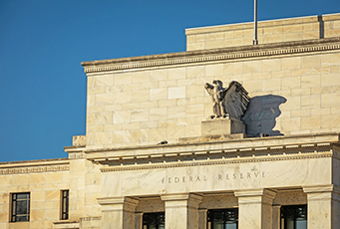Blame it on supply chain issues! We may be in the middle of the largest supply chain disruption since World War II. What exactly is the “supply chain” and how did we get into this mess?
How did it happen?
The supply chain is a network of companies that work together to deliver products to consumers. For example, an iPhone uses parts from suppliers in 43 countries. Any break in the chain, as we are seeing now, causes shipping delays and product shortages. The root cause of these current breaks in the chain is the Covid-19 pandemic. The global supply chain is a very complex system, but we can look at a few high-level points that help explain where we are today.
Demand is up
The extraordinary government stimulus we saw in 2020 put cash directly into consumers’ pockets. However, when consumers received these cash infusions, they were encouraged to stay at home and avoid vacations, dining out, going to concerts, etc.
This combination shifted demand from purchasing services to purchasing physical products, with e-commerce at the forefront of pandemic retail spending by consumers. As a result, surging demand for products has significantly outstripped the market’s capacity to produce.
Supply is low
While the U.S. economy went into demand overdrive, production was temporarily shut down due to Covid-19 restrictions, resulting in declining inventories. Low inventories then caused supply issues at the retail and production level. As consumers, we only see the dreaded “out of stock” message when shopping online or an empty shelf in the store. Keeping stock to satisfy stimulus-fueled demand is difficult for businesses, especially ones with complex supply chains, as their production is vulnerable to disruption due to shortages of inputs from other companies.
Logistical Struggles
Even when businesses produce the input goods needed to assemble a product, widespread logistical issues have become another hurdle. Container ports in U.S. coastal cities have become bottlenecks for imports, delaying the deliveries of retail and input goods from other countries.
As pandemic shutdowns were lifted and production came back online, the ensuing demand for transporting goods to the U.S. became more than these carriers and ports could handle. Ships are coming in from other countries quicker than our ports can unload them. Storage capacity is a significant issue for ports. Towers of multicolored containers occupy virtually all available space and nearby warehouses are at capacity. All waiting until trucks can arrive to haul them to their destinations.
Adding to the problem is a struggle to hire enough workers in the transportation industry nationwide, compounding the issues at ports, warehouses, railways, and trucking firms. Companies seeking truck drivers, for example, are desperate to add workers, offering sign-on bonuses in the $10,000 to $15,000 range. As a result, the American Trucking Association estimates the industry is some 80,000 drivers short of the workers needed to keep goods moving freely this year - up from an estimated shortage of 61,500 drivers before the pandemic.
Impact on Inflation
A common theme of these supply chain disruptions is increased costs. The increased cost is typically passed along to consumers. One of the primary debates among economists is whether the current inflation rates are temporary (“transitory”) or permanent. The supply chain issues play a vital role in that debate, as the current increases in product input and logistics costs are not anticipated to last forever. The real question is, how long will these disruptions persist? And, will inflation rates come down as these issues are solved?
End in sight?
Don’t hold your breath for a magical solution! The issues currently plaguing the global supply chain cannot be solved overnight. Some believe the main issues will be resolved within the next several months. Others think we will be dealing with the current supply situation for the duration of 2022. Demand, on the other hand, is only expected to increase through the holiday season and beyond!
Bottom line: Consumers must be prepared for the higher prices to stick around for a while. And, that’s why your holiday gifts may cost more!
Schedule a Consultation
We have helped our clients answer these questions and more. If you want a clear understanding of your financial future, and need help making changes to reach your goals, schedule a consultation and we can get started.
Recommended Articles
2026 Market Outlook: Themes, Risks, and the Reality of Uncertainty
Several firms, including WisdomTree, BondBloxx, and...
Private Equity and M&A in a Low-Rate World
Deal flow is the stream of business proposals, investment...





